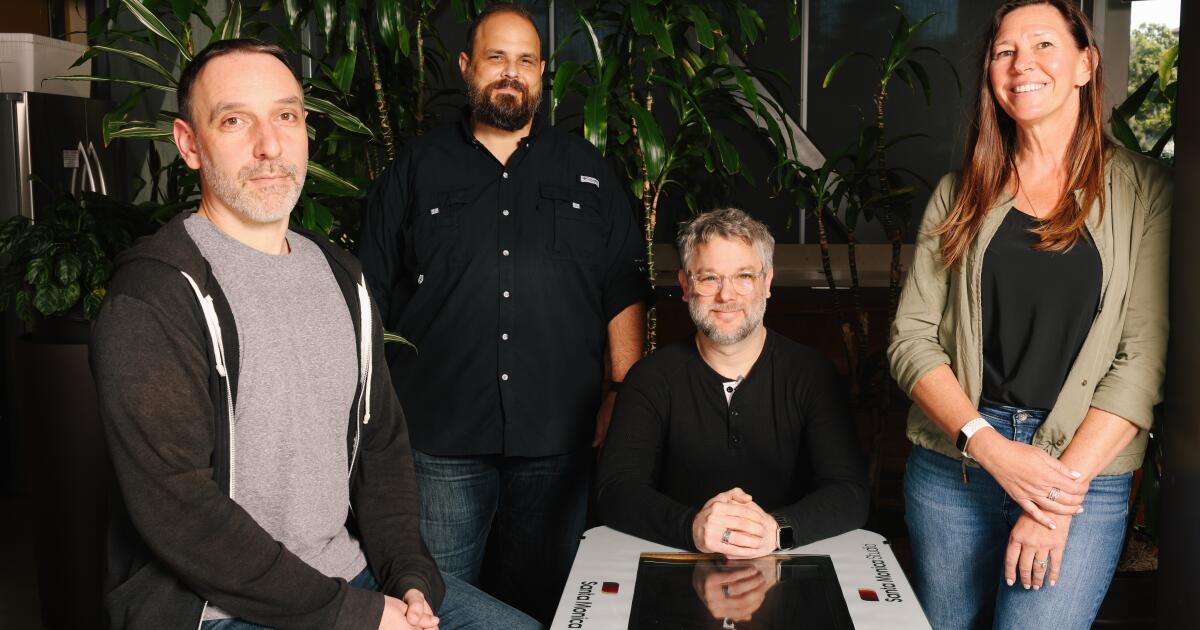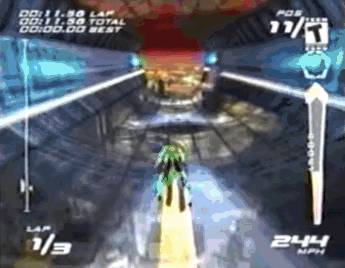kyliethicc
Member
Interview with Cory Barlog, Eric Williams, and others about God of War and SMS.

 www.latimes.com
www.latimes.com
Cory Barlog confirms they have multiple games in development.
Eric Williams says he's fine with "just" making more God of War games.
Williams on his approach to directing Ragnarök
Barlog on how The Last of Us changed the game industry
On the original God of War's hugging mechanic

Sony's Santa Monica Studio continues to lead with 'God of War Ragnarök'
Santa Monica Studio was once a champion for weird and odd games that would come to the PlayStation platform. Today, it's all 'God of War.'
Cory Barlog confirms they have multiple games in development.
Barlog says Santa Monica Studio is currently “spread out on a lot of different things,” although he declined to offer specifics.
Eric Williams says he's fine with "just" making more God of War games.
But Williams is quick to add that if the company dedicates itself full-time to the “God of War” franchise, there’s no shame in that.
“I remember talking to someone from another game company, where they were trying to get me to leave. They said, ‘Do you just want to be known as the “God of War” guy for the rest of your life?’ That was your big pitch to dissuade me? Because yes, I kind of do.”
Williams on his approach to directing Ragnarök
First-time game director Williams says he wanted “Ragnarök” to pick up where “God of War” left off. His goal wasn’t to reinvent the franchise but to have it feel as if it were a new chapter in a continuing saga.
“The best compliment I can possibly get, in my opinion, would be that I feel invisible as a director and [that] it feels like a true continuation,” says Williams. “To me, they’re siblings, and they need to co-exist. I don’t want it to be [Barlog’s] game and my game. To me, that would be sad. I want you to jump in and say, ‘This feels like we just dropped off.’ There are differences, but I don’t think they’re so drastic that it would feel strange or awkward now.”
Barlog on how The Last of Us changed the game industry
“We’ve grown slowly, over a decade or two, to that point,” Barlog says, citing Naughty Dog’s “The Last of Us” (2013) as proof that big budget video games can equally balance violence and emotion. “But I think 2018 was possible to me because of so many other games.
“‘The Last of Us’ is defining. You can challenge people on more than killing things, and they’ll want it. It proved to the executives that this is viable. Prior, it was maybe too niche. For the longest time, it was always about the back of the box. You had to have a gimmicky thing to sell it, as opposed to saying that doing something good and engaging people on all emotional levels — not just anger, frustration and fear — is viable.”
On the original God of War's hugging mechanic
Williams was adamant, for instance, that a hugging mechanic be placed amid a climactic battle of the 2005 title, where Kratos would have to lend his wife and child health to keep them protected during the fight. It was meant to play out as a manifestation of Kratos’ dreams and nightmares, as players already knew the ultimate tragic fate of his family.
It also planted a seed that Kratos could eventually evolve, though that would be more than a decade in the making.
“It was so metaphorical,” Williams said recently in the offices of Santa Monica Studio. “He was fighting the demons within himself, but he was giving his life to his family. That always stuck with me. That could be a thesis for a change in the character, which we took and ran with.”
...
“God of War” (2018) and, even more so, “Ragnarök” are examples of games that challenge the player to never set down the controller. Even plot expository moments that explain, for example, Kratos’ fraught relationship with the goddess Freya are delivered with forward momentum.
Barlog says that was the argument he used to persuade David Jaffe, director of the first “God of War,” not to cut the midbattle hugs.
“We were really excited about what we could do in the game,” Barlog says. “We make games. And it’s really neat and fun to do cinematic things, but how can you actually feel like the player has agency?”





